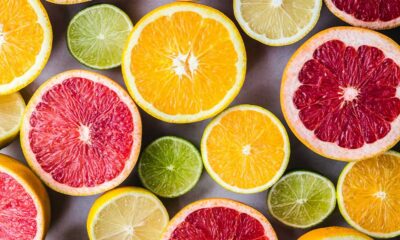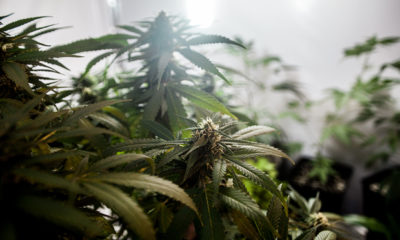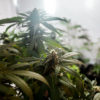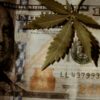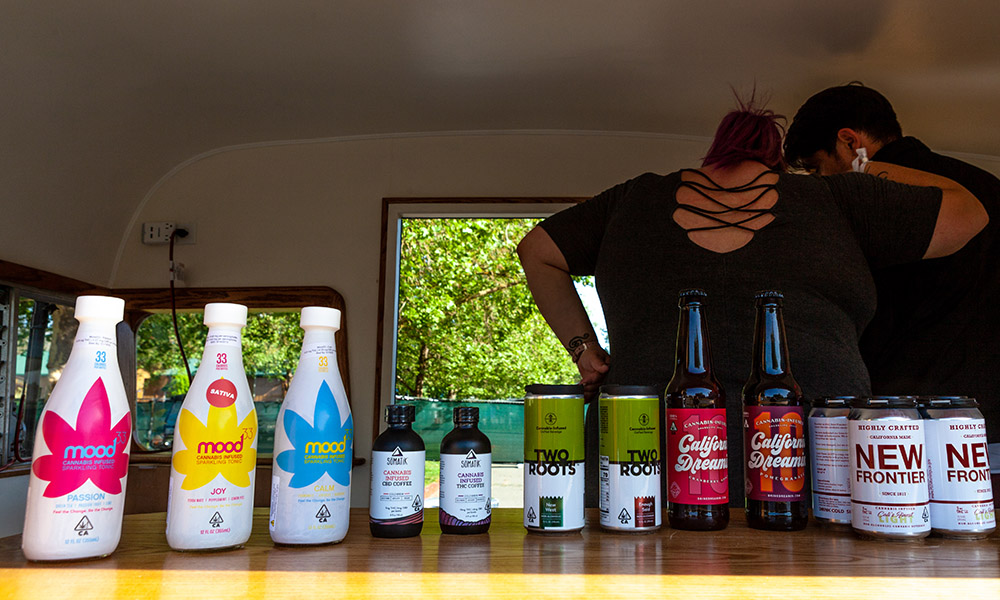
Economics
The Potential & Promise of the Cannabis Beverage Market
Seven cannabis beverage companies from the Hall of Flowers trade show in Northern California exemplify the variety of niches opening up in the cannabis beverage market, now valued at $1.4 billion dollars globally.
“The day that Coca-Cola enters the cannabis industry” has long been the sort of specter that activists and investors alike have conjured to symbolize the arrival of the corporate hoard to the legal weed party, a specter that marches alongside “the day the suits from Goldman Sachs arrive” and “the day Monsanto patents its own strain.”
In other words, it seems inevitable that Coca-Cola will one day create a cannabis-infused beverage — most likely if the federal government legalizes cannabis — and that is in large part because there is an eager audience of people who want to consume cannabis in liquid form.
According to a February report from Zenith Global, Americans spent $89 million on cannabis beverages in 2018. That same report estimated the U.S. cannabis-infused drink market would grow to $1.4 billion by 2024. As for the international potential, a report published in February from Zion Market Research valued the global cannabis beverage market at $1.6 billion in 2018 and estimated that it would generate $4.46 billion by 2025.
For now, at least, Coca-Cola hasn’t jumped in the cannabis game. Last September, BNN Bloomberg reported that Coca-Cola was “in serious talks” with the Canadian licensed producer Aurora Cannabis Inc. to develop CBD-infused beverages, but the massive multinational beverage corporation has since stalled on any development. Warren Buffett, whose holding company Berkshire Hathaway is Coca-Cola’s largest shareholder, told FOX Business last week that he didn’t think it’d be good for Coca-Cola’s wholesome brand image if it were to partner with a marijuana company.
But while Coca-Cola remains “closely watching” the growth of the CBD market (as company spokesman Kent Landers told BNN Bloomberg), a handful of much smaller companies are looking to stake their claim in the burgeoning cannabis beverages market.
Many of these beverage companies came to Northern California’s Hall of Flowers last week, a trade show in Santa Rosa that showcased the brands trying to survive in the nation’s largest cannabis market. Each of the cannabis beverage companies present had drastically different interpretations of what an infused drink could look like, though representatives from all of the companies agreed that they expected their consumer base to expand quickly in the coming years.
Non-Alcoholic Cannabis Beer: New Frontier Brewing Company & Two Roots
“It’s about disrupting alcohol, not about competing with edibles,” says Michael Sawyer, the founder of New Frontier Brewing Company. Started in 2017 and re-launched in 2018 after California’s adult-use regulations came online, New Frontier currently offers one beer style — a light lager — but they’re planning on releasing more styles soon. And it really is a beer, not just a hop-flavored beverage, with a small frothy head, herbal flavor notes and light carbonation.
The beer is brewed in San Diego as a regular craft lager before all the alcohol is evaporated out, per California regulations that prohibit the selling of cannabis-infused alcohol. Then, New Frontier infuses cannabis in the beer through a proprietary formula that Sawyer says fully suspends the THC particles in the drink.
Two Roots Brewing Co., also based in San Diego, takes a similar approach, crafting five styles of what they call a “cannabier:” a lager, a stout, an IPA, a blonde ale and a wheat beer.
“Drinking beer is a tried and true consumption method,” says Nathan Kalish, a sales executive with Two Roots, explaining why the company thinks there’s a large audience of “mainstream consumers” looking to drink cannabis. He says, much like with alcoholic beer, consumers should feel the effects around 10 to 15 minutes after drinking and can control the sort of effects they are going to receive based on how much they drink.
Herbal Syrups: The Good Stuff Tonics’ Natural Health Lemonade
Instead of pushing for a crowd interested in recreational consumption, Good Stuff Tonics is approaching the cannabis beverage equation from a decidedly more medicinal angle. Each 8-ounce brown glass bottle of its Natural Health Lemonade contains a whopping 100 mg of THC, which means it’s also accompanied by a dosing cup — much like a cough syrup bottle — that measures out a maximum of 10 mg of THC.
“The biggest hurdle we’re facing is the fear of the edible that people have,” says co-founder Billy Roberts. To combat this, the brand is working on educating potential consumers about the health benefits of their lemonades. While Roberts says that people can add a small amount of the lemonade (which is much more akin to a syrup than a juice) to sparkling water or a cocktail, it’s also easy to imagine someone swallowing a spoonful like the castor oil medications of yore.
“It might be a small niche now, but we think it will grow,” says Roberts.
Soft Drinks: California Dreaming
Think Jarritos. Think Fanta. California Dreaming’s concoctions land firmly in soft drink territory, with a splash of cannabis (and barely any flavor from the plant). The company says it doesn’t add any sugar to its fruit sodas, just all-natural fruit juice, but its drinks are still sweet enough to fit in on convenience store shelves. Despite stereotypes, children and teens (basically, anyone unable to consume cannabis legally in California) aren’t the only ones who like saccharine sodas, which is what the well-funded company is betting on.
“Our consumers range from the low-dose, mainstream consumers all the way to the heavy-hitters who want to drink it while they are smoking,” says Jon Bishop, vice president of marketing for California Dreaming.
Coffee: Somatik
Cold-brew coffee infused with craft cannabis? There’s definitely an audience there — if not the audience parodied by conservative pundits and meme accounts alike as emblematic of small-minded urban elite pretention. Somatik’s award-winning coffee is made using single-origin beans from San Francisco’s Ritual Coffee Roasters, and the brand also offers infused chocolate-covered coffee beans that they call “sparks.”
“We want to plant a seed, and grow community by creating rituals to normalize the integration of cannabis into your daily life,” the Somatik website reads. “You are magic.”
Wellness Teas: Mood33
Shooting for the niche of consumers more concerned with effect than taste, Mood 33 offers three “mood” teas and tonics, which it says is formulated after Chinese remedies. Mood 33’s drinks are almost similar to a kombucha, with their sweet, herbal, carbonated flavors.
“Joy can be a coffee replacement in the morning, Peace is great before a yoga class, Calm can be a red wine replacement,” says Sabrina Vollmer, a store leader and brand ambassador for Mood 33. “Each drink is personal.”
The formulations have different balances of THC and CBD, and they list the various terpenes included in each drink, following the “entourage effect” idea that cannabis’ hundreds of cannabinoids and terpenes work together to produce different effects.
La Croix?: HiFi Hops
This partnership between famed California brewery Lagunitas and concentrate maker AbsoluteXtracts is not a beer (though its classic beer bottle container and label might fool you), but an “IPA-inspired,” THC-infused sparkling water. Rather than a brewski, this drink tastes more like a La Croix. Basically, it’s a somewhat bitter carbonated water beverage.
“It started as a partnership with our neighbors at Lagunitas, rather than a flavor idea,” says Jeff Henderson, brand manager with HiFi Hops. He said it came after SuperCritical (a Lagunitas beer infused with AbsoluteXtracts’ terpenes), and in response to California’s stricter new regulations around infused alcohol.
TELL US, what sort of cannabis beverage would you want to try?



